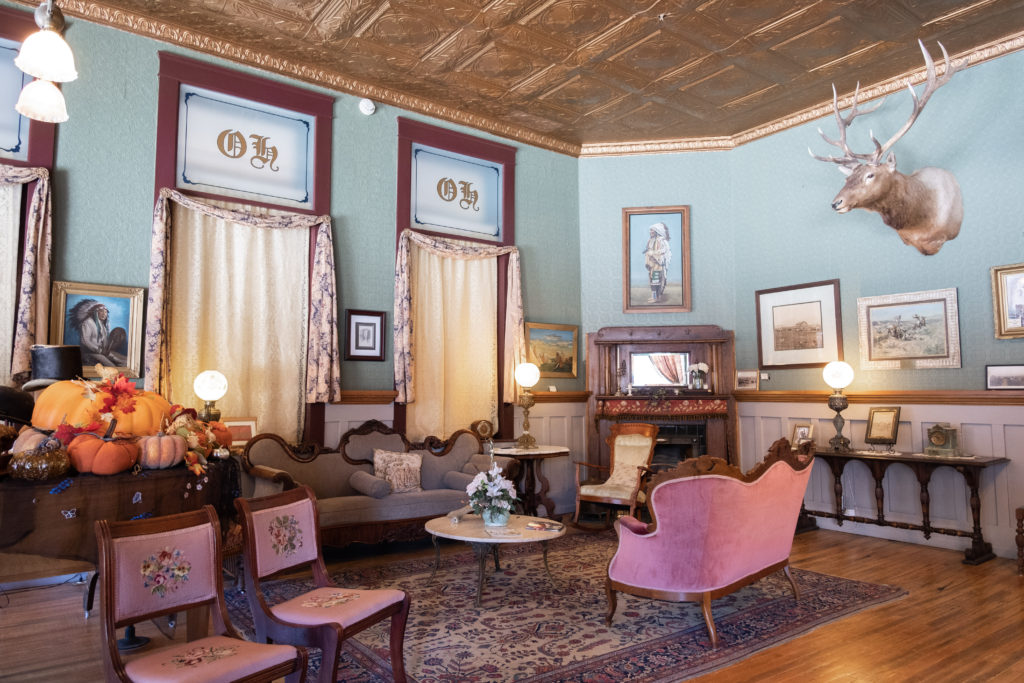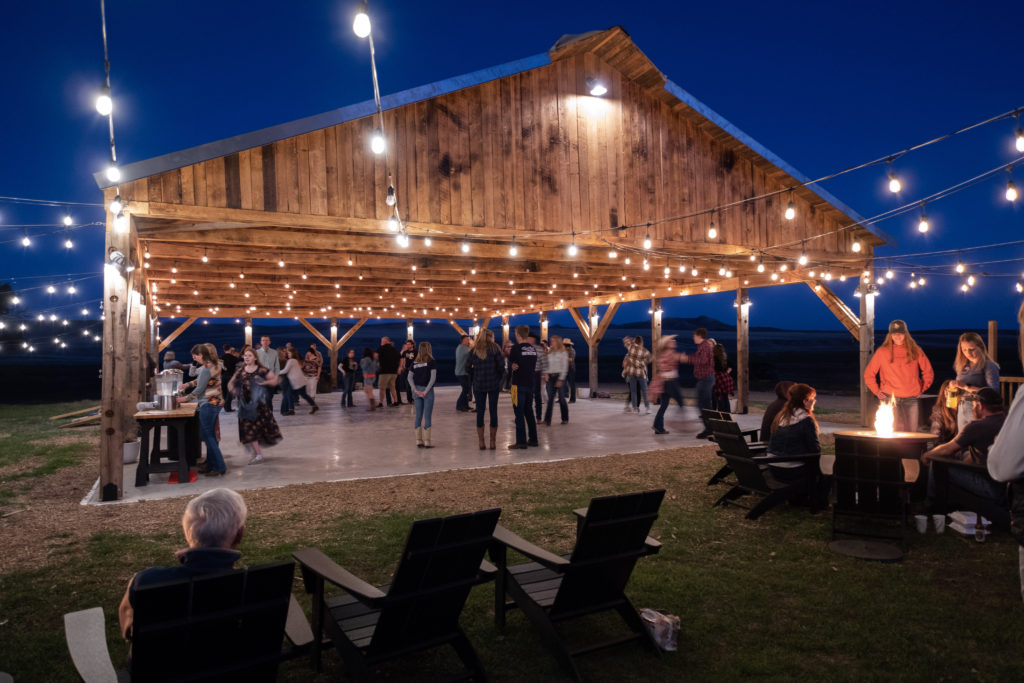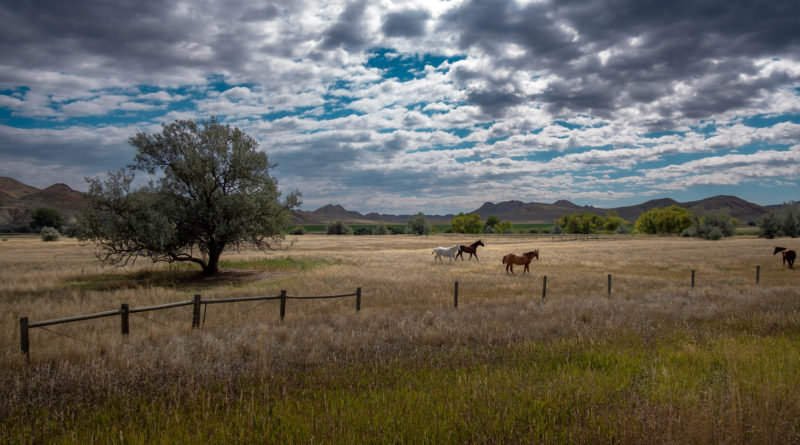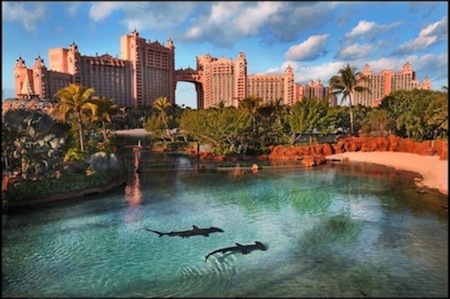Roped in By Wyoming
By Marlise Kast-Myers
We have this habit—my husband and I—of traveling to a destination with one eye on the possibility of it becoming our next home. It’s a twitch to move where the grass is greener, or the water bluer, or the neighbors further away. When we now reflect on places we once considered, we realize that we had our finger on the pulse of something big. Tulum, San Miguel de Allende, Costa Rica, Cabo, Montana—the list of “we knew back when” goes on, but instead of going “all in,” we went home.
That is, until Wyoming. Neither of us had ever been, nor did we know a great deal about the Equality State, other than it was home to national parks and had the lowest population density in the nation.
As a couple who appreciates wide open spaces—and values land over views—we booked a flight to Wyoming. Our plan was to visit Sheridan, Dayton, Gillette, and Buffalo.
After a layover in Denver, we landed at the small Sheridan County Airport. Standing at the Avis booth was a young man holding out a set of car keys. Clearly, he was expecting us. The clock was approaching 10 PM, as he pointed us toward the parking lot where our rental car was waiting.
And we were off, to the Historic Sheridan Inn. Dating back to 1893, the hotel revealed her age through creaky floorboards and Buffalo Bill memorabilia, a nod to the Wild West legend who had co-owned the property and resided there from 1894 to 1902. Today, each of the 21 rooms are themed around characters from his life, ranging from Sitting Bull to Annie Oakley. For less than $150 a night, we stepped back in time with perks like a footed tub, stone fireplace, and wide-plank porch where Buffalo Bill held show auditions, and Ernest Hemingway wrote A Farewell to Arms.
Across the street was Market Hall, Sheridan’s historic railroad depot reimagined into a café. Breakfast vouchers from the hotel satisfied our grab-n-go needs with pastries and coffee for our morning hike.
As active travelers, we always aim to connect with a destination one footstep at a time. The 45-minute drive to Tongue River Canyon set the tone from the open highway, perfectly paved and void of potholes and people.
The horizon had no end, stacked in layers of green, brown, blue, and white. Road signs pointed toward Yellowstone and Grand Teton, teasing something beautiful without overshadowing the splendor. Lines of irrigation wheels pushed forward like an invading army, hydrating crops for grazing cattle, wild turkey, and pronghorn antelope. Proclaiming a farmer’s toil were bales of hay bundled in open fields like cinnamon buns on a baking sheet.
It had been less than 24 hours since we arrived in Wyoming, and already, we were pretty smitten. At the foothills of the Big Horn Mountains, the trail along Tongue River Canyon awakened our souls with stream crossings, natural arches, and golden meadows. The 4.7-mile out-and-back hike turned into 7 when our phone signal dropped, as did the trail marker at the turnaround point. A fellow hiker informed us the signpost was missing, and that we had gone too far. We didn’t care.
In fact, we felt we hadn’t gone far enough. Wyoming has a way of doing that, by tempting one view with a more pristine one around the corner. Already on day one, there was a feeling that we had stumbled onto something special, a secret kept hidden from developers who might super-size the destination by plucking away its rugged and rural rawness.
As SoCal residents, we wanted to join the good guys and unleash our inner cowboy somewhere in Wyoming. Well, it wasn’t in Dayton. Darling as can be, the tiny town was small enough to spit through. We stopped by the Mercantile, selling everything from ice cream to antiques. It was as if the locals awakened with the ringing of the shopkeeper’s bell, and then closed down when we drove away.
Bypassing Sheridan, we drove further south to Fort Kearney State Historic Site, a national landmark along the Bozeman Trail. It was here where the Fetterman and Wagon Box battles took place in 1866 and 1867. During the Fetterman battle, 81 soldiers were killed by Indian warriors, making it one of the greatest defeats for the US Army. The following year, Indian forces attempted to repeat their victorious outcome during the Wagon Box Fight, only to be overpowered by soldiers armed with breechloading rifles.
Our guide had tears in her eyes as she pointed us toward the historic battlefield, recounting the bloodshed at Fort Phil Kearny. It didn’t take long before we saw the power Wyoming’s past had on its people. They cling to the chronicles, never throwing out the old to make room for the new.
We saw this firsthand back in Sheridan, where we went for a stroll on Main Street. Dozens of buildings were listed on the National Register of Historic Places including the WYO Theater, Sheridan County Courthouse, and, of course, The Mint — a gathering place for locals since 1907.
During Prohibition, The Mint became a cigar and soda shop, while a speakeasy secretly operated in the back room. Ice was delivered by horse-drawn carriage and handed off to bartenders serving stiff drinks to cowboys and ranchers. Not much has changed over the years. Covering the walls were firearms, photographs, and game mounts including caribou, bobcat, wolf, bear, and a Texas Longhorn rack measuring 7-feet across. It’s not the type of place where you order a glass of wine, but rather a whiskey poured like it will be your last.
Each shop on Main could have doubled as a museum, like the White Swan Barbershop from 1904, with its impressive collection of barbershop memorabilia; and King’s Saddlery, a working saddle-and-rope shop selling tack and western supplies.
There are, however, some new kids in town, like Bighorn Mountain Axe where I failed miserably at axe throwing, and my husband repeatedly hit the bullseye. The other newbie was Smith Alley Brewing Company where we shared BBQ brisket, burgers, and beers.
The following morning, we hit the road toward Gillette. Among our many detours was the Brinton Museum. Located in the Bighorn Mountains, the historic Brinton Ranch was just as impressive as the museum itself, housing a rare collection of Western and American Indian art.
The day’s most impressive masterpiece, however, was Devils Tower National Monument. In the distance, we could see the geological formation pushing against the sky, rising 1,267 feet above the Belle Fourche River. From the base, were specs of color peppering the tower, each one a brave rock climber scaling its parallel cracks.
Tattered scarves blew in the wind, knotted around branches and trunks. These sacred cloths represented the spiritual connection that over 20 Native American tribes have had with the Tower. During our hike along Red Beds Trail, we crossed paths with white-tailed deer and prairie dogs, living their best life among the Ponderosa pines and Black Hills.
En route toward Gillette, we detoured toward Ucross where writers, composers, and artists can set up residency at a 20,000-acre ranch. Among acclaimed works completed at Ucross were Annie Proulx’s The Shipping News, Elizabeth Gilbert’s Eat Pray Love, and Ricky Ian Gordon’s operatic adaptation of The Grapes of Wrath.
In a surreal setting like Ucross, it’s no surprise that the creative process flows for so many artists. The place was still and silent, with a feeling as if someone forgot to lock up for the season. Our goal was to get lost in scenery, turn onto barren roads, and enter breathtaking spaces that called our name. Ironically it was a stone chapel that had us pushing the brakes.
The church was empty, yet open, as if yearning for a passing stranger to admire its beauty. Each stone had a story, transported from Montana homesteads dating back to the 1800s. Casting beams of light were stained-glass windows, shining down on wooden pews sourced from a historic church in Buffalo. From the hand-hewn timbers to the ridge-beam rafters, it was the type of chapel that made you want to stop and pray.
We were both quiet enroute to Gillette, mesmerized by the landscape and wildlife fronting the big open sky. Below a duvet of marshmallow clouds stood deer, antelope, horses, and cattle—grazing freely as if beast owned man. Snaking through borderless plains were rivers and creeks, broken only by barns and ranches tucked behind tree lines. Back on the highway, it seemed eerily empty, as if we were the ones left behind. It was this in-between space from town-to-town that we loved most, regardless of the creature comforts we found in Gillette.
That night we slept at Home2 Suites by Hilton, centrally located near restaurants like The Prime Rib, where we capped the day with bacon wrapped dates, steak with fries, and fig pizza. Over dinner the conversation of “what if” began, throwing my mind into the possibility of moving to a state I’d only known for three days.
The following morning, we dropped the topic and instead visited the Frontier Relics & Auto Museum. Inside the 13,000-square-foot warehouse were vintage scenes recreating a drive-in theater, a model railway, and a soda fountain with pinball machines and other memorabilia. The collection of classic cars and motorbikes—all in mint condition—were backdropped by neon signs and gas pumps.

Going back further in time, we drove to Buffalo, home to the Occidental Hotel & Saloon founded in 1880. The famed hotel became a watering hole and resting place for cowboys traveling along the Bozeman Trail. Among its many guests were Buffalo Bill Cody, Teddy Roosevelt, Calamity Jane, and Butch Cassidy and the Sundance Kid who rode to the Occidental from their hideout at the nearby Hole-in-the-Wall.
Despite the years, the Old West personality remains, right down to the saloon’s original back bar, and the bullet holes in the walls. Attached to the Occidental was Busy Bee Cafe, where high balls are cheaper than beer. A bison burger and malt shake hit the spot before we explored Buffalo.
Located between Yellowstone Park and Mount Rushmore, the small town has an antique shop, cafe, barbershop, and a steepled church. Unlike Main Streets that aim to recreate the past, Buffalo seems to have never left it—almost frozen in time with little concern for growth or development.
In full California mode, I wanted a vanilla latte with almond milk (not to be confused with a Starbucks). Happily, the Mini Place—aka Cowgirl Coffee—served us well, with all the caffeine and syrups our hearts desired. Next door, Bucking Buffalo Supply Co lured us with the scent of leather and wool, stacking up plaid shirts, cowboy hats, boots, and Pendleton throws.

With two days left on our quest, we had yet to unleash our inner cowboy, so we headed to the nearby TA Guest Ranch. Dating back to 1892, this working cattle ranch was the site of the Johnson County War. The original buildings on the Wyoming homestead have been restored into 13 guest rooms framing the Ranch House where massive entrees of ribeye, bison steak, and lamb chops are served. I went mellow with the rainbow trout and a tall glass of California wine.
That first sip triggered the conversation, “Would you miss California if we moved?”
My husband shrugged, mentioning something about getting to know Wyoming a little better. And so, we did, during a wagon ride, during line dancing in the barn, and during our horseback ride across the 8,000 acre-property. With the owner’s daughter as our guide, we learned that she left her career as a Denver lawyer to become a cowgirl back at the family ranch. She was drawn to the lifestyle where dependence on your neighbor overpowers politics, religion, race, and gender.
Today, she helps wrangle the 45 horses with the other cowgirls who rehabilitate the herd through horse whispering. We asked her if the grass was greener in Wyoming, and she told us to come back in winter.
With one final day on our schedule, we spontaneously drove six hours into the heart of Wyoming—going wherever the road would lead us. Along the way, we grabbed beers in Cody, and cut through Crazy Woman Canyon, unveiling towering cliffs, flowing creeks, and some of the best of Wyoming’s wilderness. We passed weather-worn cowboys corralling herds of cattle, stopping only to tip their hats in acknowledgment. The horizon was endless, with views a camera could never capture. Turning toward my husband, I asked him why California didn’t have a big sky like Wyoming.
“Because we can’t see that far,” he answered.
He was right. Back home, our landscape was blocked by eye-level construction and obstacles that hindered the view. In Wyoming, there wasn’t too much to shade the horizon other than nature itself.
It was after dark by the time we arrived back at TA Ranch, greeted by our cowgirl who asked if we had found our “home.” We told her we hadn’t, but we were getting pretty darn close.
“Keep exploring,” she said, grabbing the brim of her hat. “Wyoming will rope you in soon enough.”


